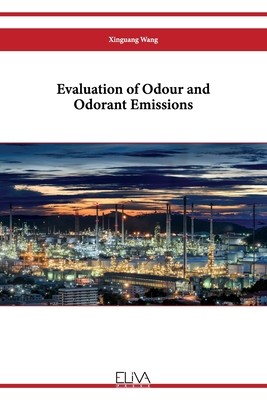
- We will send in 10–14 business days.
- Author: Xinguang Wang
- Publisher: Eliva Press
- ISBN-10: 1636486169
- ISBN-13: 9781636486161
- Format: 15.2 x 22.9 x 0.3 cm, softcover
- Language: English
- SAVE -10% with code: EXTRA
Reviews
Description
Odour issue has drawn more and more public attentions with increasing air pollution and public environmental protection awareness. Odour is sensory concept and it is caused by single or mixed odorous compounds (or called odorants). So far it is still hard to corelate the sensory character with chemical features of an odour. Characterization and quantification of odour and odorants are important for evaluation and assessment of odours, which is also important to choose what engineering measures can be applied for odour treatment and control. They are the key aspects revealed and discussed in this book.
Sample collection, analytical methods, evaluation and assessment techniques of odour and odorants were summarised in the book via a couple of study cases which include investigation of odour emissions from municipal landfill site, dredged sediments of a lagoon and a harbour in Australia. Sampling technologies used in the studies include using of USA EPA flux hood chamber, liquid absorbent trapping by impingers, adsorption tubes, Tedla/Nalophan sampling bags, and so on. Sample analysis involves olfactometric measurement by dynamic olfactometer with help of screened human panelists, HACH spectrophotometer method for hydrogen sulfide and ammonia analysis, thermal desorber-gas chromatography-mass spectrometry (TD-GC-MS) analysis of VOCs (volatile organic compounds), thermal desorber-gas chromatography-sulfur chemiluminescence detector (TD-GC-SCD) analysis of VSCs (volatile sulfur compounds), etc. Contribution of individual odorant to overall odour were also tried based on concentration of odorants and their odour thresholds. It is believed that odour and odorant contributionEXTRA 10 % discount with code: EXTRA
The promotion ends in 19d.13:50:00
The discount code is valid when purchasing from 10 €. Discounts do not stack.
- Author: Xinguang Wang
- Publisher: Eliva Press
- ISBN-10: 1636486169
- ISBN-13: 9781636486161
- Format: 15.2 x 22.9 x 0.3 cm, softcover
- Language: English English
Odour issue has drawn more and more public attentions with increasing air pollution and public environmental protection awareness. Odour is sensory concept and it is caused by single or mixed odorous compounds (or called odorants). So far it is still hard to corelate the sensory character with chemical features of an odour. Characterization and quantification of odour and odorants are important for evaluation and assessment of odours, which is also important to choose what engineering measures can be applied for odour treatment and control. They are the key aspects revealed and discussed in this book.
Sample collection, analytical methods, evaluation and assessment techniques of odour and odorants were summarised in the book via a couple of study cases which include investigation of odour emissions from municipal landfill site, dredged sediments of a lagoon and a harbour in Australia. Sampling technologies used in the studies include using of USA EPA flux hood chamber, liquid absorbent trapping by impingers, adsorption tubes, Tedla/Nalophan sampling bags, and so on. Sample analysis involves olfactometric measurement by dynamic olfactometer with help of screened human panelists, HACH spectrophotometer method for hydrogen sulfide and ammonia analysis, thermal desorber-gas chromatography-mass spectrometry (TD-GC-MS) analysis of VOCs (volatile organic compounds), thermal desorber-gas chromatography-sulfur chemiluminescence detector (TD-GC-SCD) analysis of VSCs (volatile sulfur compounds), etc. Contribution of individual odorant to overall odour were also tried based on concentration of odorants and their odour thresholds. It is believed that odour and odorant contribution

Reviews